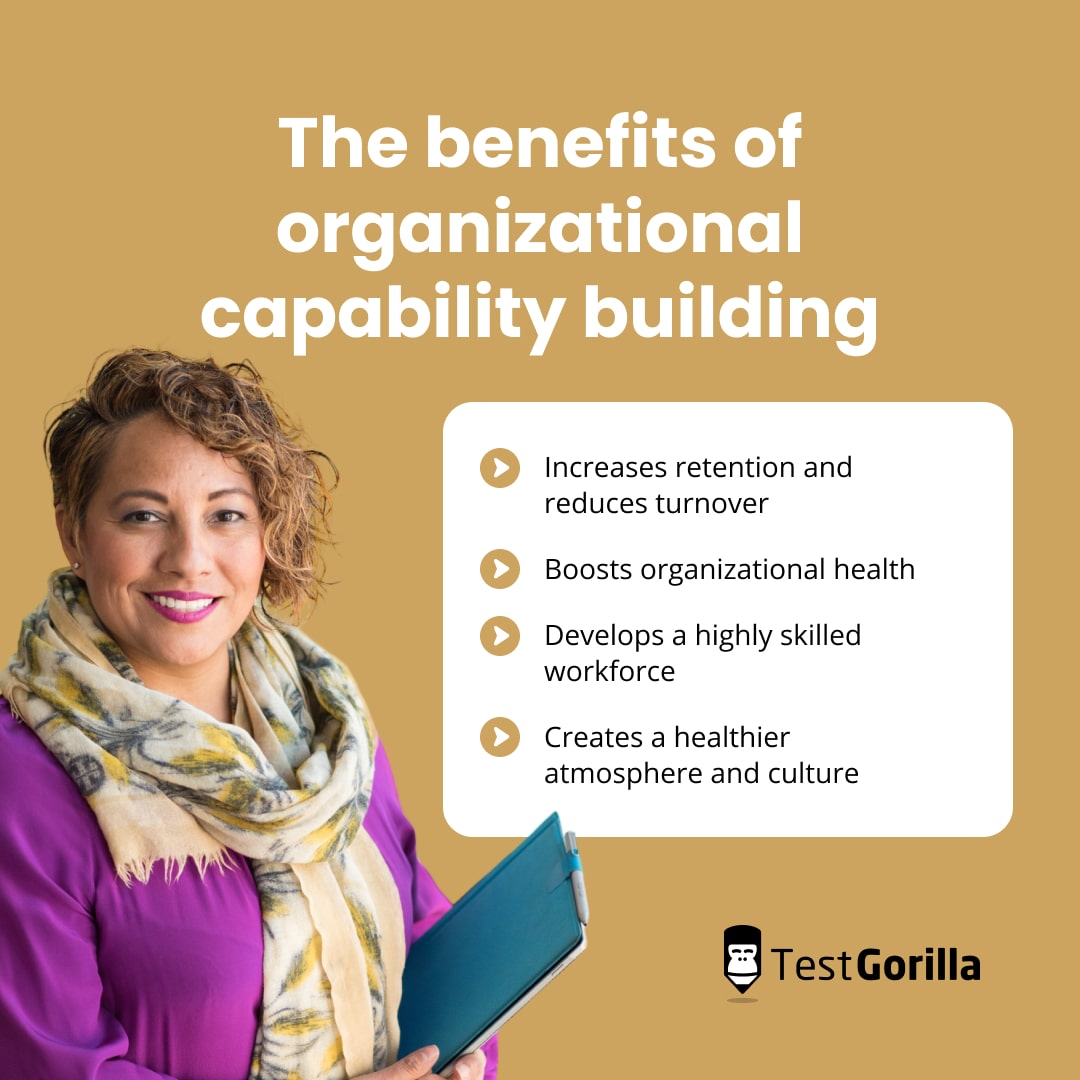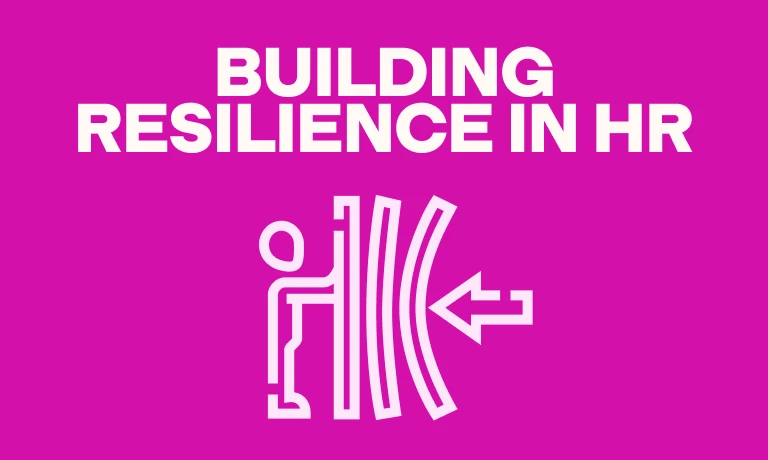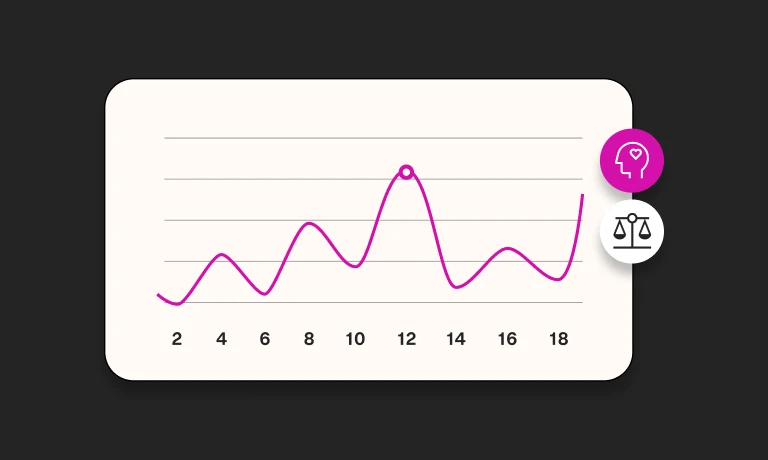Capability building: How to leverage this talent acquisition strategy and plan for future growth
The world of work is changing.
AI technologies are seeing a meteoric rise in popularity, making some jobs obsolete and also creating the need for new jobs that rely on AI skills.
All this change means that a business’s skills and capabilities to thrive are shifting. If you want your company to stay competitive, your talent acquisition strategies need to adjust to keep up.
Capability-building frameworks are a way to stay on top of your long-term business needs.
A good capability-building strategy helps you to determine your company’s needs, and then nurture them to promote long-term growth.
It’s more than a talent acquisition trend: It’s a way to ensure your business’s longevity by developing top talent.
So what is capability building in HR? This guide explores what it is, why it matters, and how to make it work for your business.
We also explore some successful capability-building examples.
Table of contents
- What is capability building?
- Why is the capability building process important?
- The benefits of organizational capability building
- 7 best practices for leveraging a capability building framework to acquire top talent
- 4 examples of companies succeeding with capability building as a talent acquisition strategy
- Implement a capability building framework to keep your business competitive
What is capability building?
Capability building is identifying and developing the capabilities a business needs to succeed.
A business’s capability-building framework is its plan for undertaking that process.
Capability building is the process that shapes a company’s continuous learning and development strategy.
After identifying the core capabilities you need to develop in your staff, you can build employee development around those capabilities through training and education for individual employees.
Your capability building should be scalable because it is a major driver of your company’s growth and success. That way, you can continue to use it even as your business moves from strength to strength.
Capability, competency, capacity: What are the differences?
When talking about capability building, people tend to throw the words “capability,” “capacity,” and “competency” around interchangeably.
But all these words have specific meanings concerning capability building.
Here’s a quick guide:
Term | What it means |
Capability | The ability to do something or make something happen |
Competency | The possession of enough knowledge or a specific area of competence (a content writer could be capable of graphic design without it being a core competency) |
Capacity | The resources of a business, often concerning a particular project (like “capacity for change” or “capacity for growth”) |
Why is the capability building process important?
Capability building matters because it promotes the long-term growth of your company.
Without it, you risk becoming stagnant or, even worse, losing your competitive edge.
In a McKinsey survey, nearly 80% of business leaders said that capability building is important to the long-term growth of their organizations. That’s up from 59% a decade ago.
It’s a sign of how quickly the landscape of the working world is evolving. From the rise of remote employees to the growing popularity of AI, companies need to be able to adapt if they want to keep growing.
That means taking the time to assess your capabilities against your long-term needs and taking action to ensure you have what you need to thrive. It’s an important form of strategic workforce planning.
Continuous growth is also good news for your shareholders, who stand to profit from your company’s ongoing success.
Businesses with shareholders don’t have to prioritize them above all else, but delivering great returns for them makes financial sense.[1] In that sense, a solid capability building framework is a sound business decision.
Capacity building is also great news for human resources. It means more learning and development opportunities, which workers consider increasingly necessary.
When surveyed, 94% of employees said they would stay in their roles for longer if their employers invested more heavily in their growth and development to help them achieve their full potential.[2]
Capability-building initiatives boost satisfaction and retention, bolstering your profits.
Learning and development opportunities also promote a good company culture in which everyone is encouraged to learn and grow. That’s a major selling point for prospective new hires.
The best insights on HR and recruitment, delivered to your inbox.
Biweekly updates. No spam. Unsubscribe any time.
The benefits of organizational capability building
Capability building has specific, practical advantages for any business.
From company culture to employee retention, here are the biggest reasons to invest in capability building.
Increases retention and reduces turnover
As we’ve already seen, many employees would be willing to stay in their roles if given more opportunities to develop and learn.
A strong capability-building framework that includes plenty of chances for workers to upskill is a great way to reduce employee turnover.
And since turnover is estimated to cost US businesses more than $1tn every year, it’s worth your while to limit it where you can.
Boosts organizational health
Organizational health is a company’s ability to come together based on a shared vision, execute that vision, and adapt to changes along the way.
It’s a key factor in business performance.
Around 80% of organizations that took action to improve their organizational health saw a performance improvement.
By definition, capability building involves developing the capabilities you need to accomplish your business goals in the face of change. It’s an approach that has direct positive impacts on organizational health.
Develops a highly skilled workforce
The benefits of an organization’s ability to build skills and achieve organizational change reach beyond its specific organizational goals and into the day-to-day performance of its staff.
When you implement a capability building framework, you commit to boosting your workers’ skills to meet your needs – and that upskilling process makes for more versatile, well-rounded senior leaders and employees.
That’s especially true when you focus on developing your workforce’s power skills.
When surveyed, 61% of professionals agreed that these soft skills are just as crucial as hard skills for success at work.
Creates a healthier atmosphere and culture
A culture in which workers are encouraged to come together and learn benefits from sustainability is a healthier, more collaborative company culture.
And since we know that toxic company cultures drive voluntary turnover, it’s in your interest to build a healthy atmosphere within your company.
A survey from SHRM shows that 84% of organizations agree on the cultural benefits of learning opportunities for staff. Capability building fosters a learning culture that brings your staff together.
7 best practices for leveraging a capability building framework to acquire top talent
When building business capability, it’s crucial to go about it correctly. Otherwise, your capability building framework can fail to be as effective as it could be.
Here’s how to maximize the benefits of capability building for your business.
Building capability in the workplace at a glance
Strategy | How it helps |
1. Conduct a skills gap analysis to discover your current capabilities | Presents a data-driven picture of your organization’s skills gaps and indicates where you need to build capability |
2. Hire for adaptability | Creates a flexible workforce with wide-ranging capabilities and a willingness to use them broadly |
3. Have a continuous talent pipeline of candidates with the capabilities you need | Ensures that your organization is ready for unexpected turnover in a way that preserves its existing capabilities |
4. Assign employees tasks that match their skill sets | Puts your workforce to the most efficient possible use based on workers’ skills and abilities |
5. Lead from the top | Models ideal behavior for employees, fostering a learning mindset in the workplace |
6. Commit to continuous improvement | Helps you create a capability building framework that adapts to your changing needs over time |
7. Build your company’s soft skills and behavioral competencies for the future | Keeps your business ready to adjust to changes in technology and ways of working |
1. Conduct a skills gap analysis to discover your current capabilities
Before creating your capability-building program, you need to understand what your capabilities are right now. That way, you can make plans to build on them in the future as part of your change management effort.
A skills gap analysis should be the starting point for any company planning a capability building framework.
It shows the skills you already have compared with the skills you need to meet your business goals.
Here’s how to perform a skills gap analysis:
Identify your long-term goals for your business
Consider and determine the skills your organization needs to achieve those goals
Use talent assessment tests to assess whether your employees have the skills they need
Plan to build capability where there are gaps between your workforce’s current skills and your business needs
With TestGorilla, it’s easy to build custom skills assessments based on the responsibilities of your teams. Choose all the skills you need to assess, then compile them into a single multi-test assessment.
Once your employees have completed the tests, you can view their results easily.
2. Hire for adaptability
Adaptable employees are great at adjusting to change. When you hire for adaptability, you reap a broad range of benefits:
Increased agility
Better responsiveness in the face of sudden change
Improved innovation
A more supportive environment for employees with multiple skill sets
And, of course, adaptable workers are more able to adapt to the needs of your capability building framework.
They’re well-placed to learn new skills and competencies and adjust to an increasing demand for flexibility in the workplace. Hiring for adaptability puts you in a great position to build capability across your business.
One way to ensure you’re hiring adaptable candidates is the Motivation test, which helps employers confirm that their expectations align with candidates’ expectations.
If a candidate isn’t expecting to have to adapt, you could be risking a mis-hire.
Remember, even the most adaptable employees may experience burnout when asked to overextend themselves. It’s important to monitor employee wellness and to take steps to protect it proactively.
3. Have a continuous talent pipeline of candidates with the capabilities you need
When you anticipate your future skill and capability needs, you’re in a great position to plan to hire to meet those needs.
That’s the principle behind the talent pipeline, a talent acquisition strategy that sees companies cultivate relationships with top talent before hiring.
Using a talent pipeline approach eliminates the need to source candidates reactively when roles open up.
Instead, you recruit proactively from your pipeline of candidates, whom you’ve added based on their ability to meet your business needs.
It’s a form of candidate nurturing that reduces your time-to-hire.
Here’s how to build a talent pipeline to fill capability gaps in your company:
Identify your company’s long-term goals and needs
Proactively source candidates with the skills and capabilities you need to meet those goals – try social media recruiting or an employee referral program
Assess your candidates’ skills and abilities using skills-based hiring methods
Nurture candidates through networking, training, and development opportunities so they have a shorter ramp time when hired
4. Assign employees tasks that match their skill sets
Employees who can’t complete the tasks you assign to them are likely to feel defeated and demoralized. In the long term, that could hurt your ability to retain them.
But as you start to build skills and capabilities within your workforce, it’s a good idea to give your staff room to put their learning to use.
Skill-based task matching consists in giving your team members assignments that are attainable but challenging.[3]
Workers thrive on the challenge and build their skills even further, given the opportunity to put them into practice.
Skill-based task matching works especially well when you assign tasks to entire teams. The challenge brings the team together and helps them to develop as a group.
If your workers struggle to complete their assigned tasks, it’s a sign that they need further support as they continue to build their capabilities.
5. Lead from the top
Any cultural change in the workplace needs to start at the top, and capability building is no exception.
When you want your staff to show specific capabilities, you must ensure that your company’s leadership drives the change.
Your leaders should model the behaviors they want employees to show at work, using their leadership skills to model a strong example.
That could mean:
Participating in any skills gap analyses and talent assessments
Attending training sessions with other workers
Learning new skills as needed
Your company’s leadership needs to believe in your capability building project. As an HR leader, you must explain the capability-building benefits to them to ensure they’re fully on board.
But ultimately, a cohesive company culture is great for your employer branding. If your leadership is willing to take ownership of your capability building framework, it sends a great message about your culture to potential new hires.
6. Commit to continuous improvement
The working world and the skills and capabilities companies need to get ahead are always changing. That’s why capability building can’t simply be a one-time exercise.
Instead, it should be an ongoing process that reflects your changing needs, goals, and company mission.
To make sure you’re always re-evaluating your capability building needs, follow these steps:
Schedule regular reappraisals of your business goals and the skills they need
Keep performing skills gap analyses and testing employees’ skills to make sure you’re still on track
Update your learning and development opportunities regularly so employees have chances to acquire the skills they need
Continue recruiting diverse candidates with a wide range of skills and perspectives to fill the remaining gaps
Remember that a willingness to adapt and grow is the cornerstone of an appealing corporate identity. Employees want to work for companies that are prepared to change what isn’t working – making continuous improvement a great way to attract talent.
7. Build your company’s soft skills and behavioral competencies for the future
We’ve already mentioned that the world of work is changing thanks to new developments in AI, which mean companies can automate more jobs.
Jobs like data entry, which doesn’t require a human touch, are likely to be replaced by AI functionality in the coming years.
But at the same time, demand for jobs that do need behavioral competencies or soft skills is expected to rise.
As your company looks to the future, focus on building capability in skills and competencies like:
Communication
Critical thinking
Innovative thinking and creativity
Collaboration and teamwork
Emotional intelligence
Leadership skills
Time management
These are skills that AI isn’t able to replace. Regardless of your company’s specific goals, it’s safe to bet that building capability in these areas makes your company more resilient.
4 examples of companies succeeding with capability building as a talent acquisition strategy
Capability building is already widely used among companies, including some well-known brands.
Check out these four capability building examples to see a good framework in practice.
Capability building examples at a glance
Company | How it’s succeeding |
Pixar | Encouraging valuable soft skills like creativity and collaboration to build a welcoming company culture |
Boston Scientific | Using a data-driven approach to develop a forward-thinking capability building framework |
Starbucks | Promoting a learning culture through ongoing learning opportunities related to the wider industry |
Abstract | Leading by example and bolstering employee engagement by training leaders and managers in crucial soft skills |
Pixar
Pixar, the well-known animation studio, is powered by creativity. It’s the skill that drives the company’s brand and reputation, as well as the success of its movies.
So it’s no surprise that the company’s capability building efforts focus on encouraging creativity in the workforce.
According to Ed Catmull, the company’s co-founder, every member of the production group is encouraged to contribute ideas to develop a new movie.[4]
That’s a lot of input, given that each production group has between 200 and 250 members.
It means that employees need to be able to collaborate effectively. Otherwise, they don’t have a welcoming environment to share their ideas, and the organization’s creativity could suffer.
The company works hard to build an environment that encourages trust and mutual respect. A good company culture – what the studio calls a “peer culture” – is critical to fostering creative thinking.
To facilitate that culture, the company practices giving and receiving feedback daily. These sharing sessions, called “dailies,” teach employees how to share their work without embarrassment and how to respond to others’ work constructively.
In this kind of environment, capability building is always ongoing. It’s part of what makes the studio a well-regarded place for creative people.
Boston Scientific
Boston Scientific, a biomedical engineering firm, drew on its employees’ input to develop its capability building framework.
It asked staff to rank the company’s current capabilities on a scale of one to five and to indicate the level of capability it would need to achieve its organizational goals.
The survey also left room for comments so staff could elaborate on their rankings
The results revealed that the organization didn’t have the capabilities to meet its goals. In particular, the score for current achievement in strategic unity was 0.91 points less than the score considered necessary for the future.[5]
The survey helped the company define the capabilities it would need to execute its plan for improvement and drove its capability building efforts.
In particular, the organization focused on building capability in recruitment marketing. Led by its new recruitment marketing strategy, it created a hiring plan to build talent that could serve a broader range of customers.
This data-driven approach to capability building used employee voice to identify skill gaps within the business.
The result? A talent acquisition strategy that enabled the business to meet its objectives and reap the benefits of growth.
Starbucks
Starbucks, the coffee shop chain, builds business capability through its thorough system of training and development opportunities.
Staff are encouraged to participate in the Starbucks Coffee Academy, which offers in-depth education on the coffee industry. It’s a perfect way for workers to build the skills they need to cultivate lasting careers.[6]
The chain positions itself within the context of the wider industry to bolster employee engagement.
But industry knowledge isn’t the only thing employees need to succeed. The company’s learning and development program also reflects that.
It recognizes that its biggest asset in building its customer base is the experience it delivers in its coffee shops. That experience mainly stems from its workers and the customer service they offer.[7]
The business trains new employees in its history and culture to ensure that its workers fully understand the products they sell and to encourage them to share their insights with customers.
They also learn about the different products on offer and how to prepare them.
The company’s onboarding best practices also mean that new hires learn how to deliver top-tier customer service.
Between its comprehensive initial training program and opportunities for ongoing learning, the company promotes a learning culture that makes coffee shops great places to work and visit.
Abstract
Abstract, a design intelligence firm, works with more than 7,000 companies to improve their workflows. Internally, it struggled with consistently low employee engagement, however.
Low engagement puts the company at risk of an increase in turnover – a danger given the growth of its customer base.
Internal surveys showed that employees were particularly unhappy with their managers. Employees who left the company tended to cite their managers as their main reason for leaving in exit interviews.
The company realized that managers needed to develop their core leadership skills, such as:
Planning and directing work
Self-awareness
Having difficult conversations with staff
Building rapport with their direct reports
To build capability in these crucial areas, managers in the company’s engineering department implemented a weekly coaching hour.
At these sessions, managers could roleplay difficult situations and receive feedback on their performance. It proved a great way for people to learn from one another and develop as leaders.
This approach saw employee engagement scores rise substantially across the organization. Plus, after the sessions began, 81% of learners reported improving their skills.[8]
Building capability enabled the firm to continue growing without the setbacks of low employee engagement.
Implement a capability building framework to keep your business competitive
The bottom line is that capability building is vital for businesses to stay ahead of their competition.
When you understand the capabilities you have and the capabilities you need, you’re in a great position to close the gap between the two.
It shows you how to target your capability-building initiatives and hiring strategies, so you can acquire the skills and capabilities your business can rely on.
Spending time on capability building today could prevent your business from becoming obsolete and unprofitable.
Next, check out our guide to AI in talent acquisition. Although AI is changing how we work, and those changes aren’t all for the worse – if implemented correctly, they can make your hiring process more efficient.
When you’re ready to conduct your first skills gap analysis, use our test library to build assessments and evaluate your staff.
Sources
Delipallas-O’Donnell, Alex. (February 26, 2023). “Does the law require public companies to maximise shareholder value?”. Legislate. Accessed August 15, 2023. https://legislate.ai/blog/does-the-law-require-public-companies-to-maximise-shareholder-value
“Developing Employees and Improving Performance”. LinkedIn Learning. Accessed August 18, 2023. https://learning.linkedin.com/resources/career-development/develop-employees
Kachigan, Megan. “Top 7 Ways To Build Capability In A Team (and the top training methods!)”. Teamly. Accessed August 15, 2023. https://www.teamly.com/blog/team-capability-building/
Catmull, Ed. (September 2008). “How Pixar Fosters Collective Creativity”. Harvard Business Review. Accessed August 15, 2023. https://hbr.org/2008/09/how-pixar-fosters-collective-creativity
Smallwood, Norm; Ulrich, Dave. (June 2004). “Capitalizing on Capabilities”. Harvard Business Review. Accessed August 15, 2023. https://hbr.org/2004/06/capitalizing-on-capabilities
“Cultivate Your Coffee Curiosity”. Starbucks Global Academy. Accessed August 15, 2023. https://starbucksglobalacademy.com/coffee-academy/ongoing-learning/
“How Training Saved Starbucks From Its Extinction”. (May 5, 2023). Knorish. Accessed August 15, 2023. https://knorish.com/blog/creator-stories/training-saved-starbucks-from-extinction/
“A soft skills toolkit for engineering managers”. Lingo Live. Accessed August 15 2023. https://www.lingolive.com/resources/abstract-case-study/
You've scrolled this far
Why not try TestGorilla for free, and see what happens when you put skills first.
















